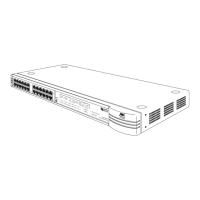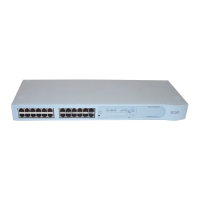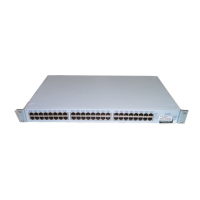Displaying and Changing Bridging/VLANs Information 107
■
maxAge
— Displays the maximum age in seconds at which the stored
configuration message information is judged to be too old and is
discarded. This value is determined by the root bridge.
■
bridgeHelloTime
— Displays the Hello time value, used when this
bridge is the root bridge. This value is the time that elapses between
the configuration messages generated by a bridge that assumes itself
to be the root.
■
helloTime
— Displays the time that elapses between the
configuration messages generated by a bridge that assumes itself to
be the root.
■
bridgeFwdDelay
— Displays the forward delay value used when this
bridge is the root bridge. This value sets the amount of time that a
bridge spends in the listening and learning states.
■
forwardDelay
— Displays the time that a bridge spends in the
"listening" and "learning" states.
■
holdTime
— Displays the minimum delay time in seconds between
sending topology change Bridge Notification Protocol Data Units
(BPDUs).
■
rootCost
— Displays the cost of the best path to the root from the
root port of the bridge. For example, one determining factor of cost is
the speed of the network interface, that is, the faster the speed, the
smaller the cost.
■
rootPort
— Displays the port with the best path from the bridge to
the root bridge. Will display a port number, or No Port.
■
priority
— Displays the configurable value that is appended as the
most significant portion of a bridge identifier.
Enabling and
Disabling IGMP
Snooping
You can enable or disable IGMP Snooping for all Switch units in the stack
using the
IGMP
command on the Multicast Filtering menu.
To enable or disable IGMP Snooping:
1
At the Top-level menu, enter:
bridge multicastFiltering igmp
The following prompt is displayed:
Enter new value (disable, enable) [disable]:
2
Enter
enable
or
disable
.
